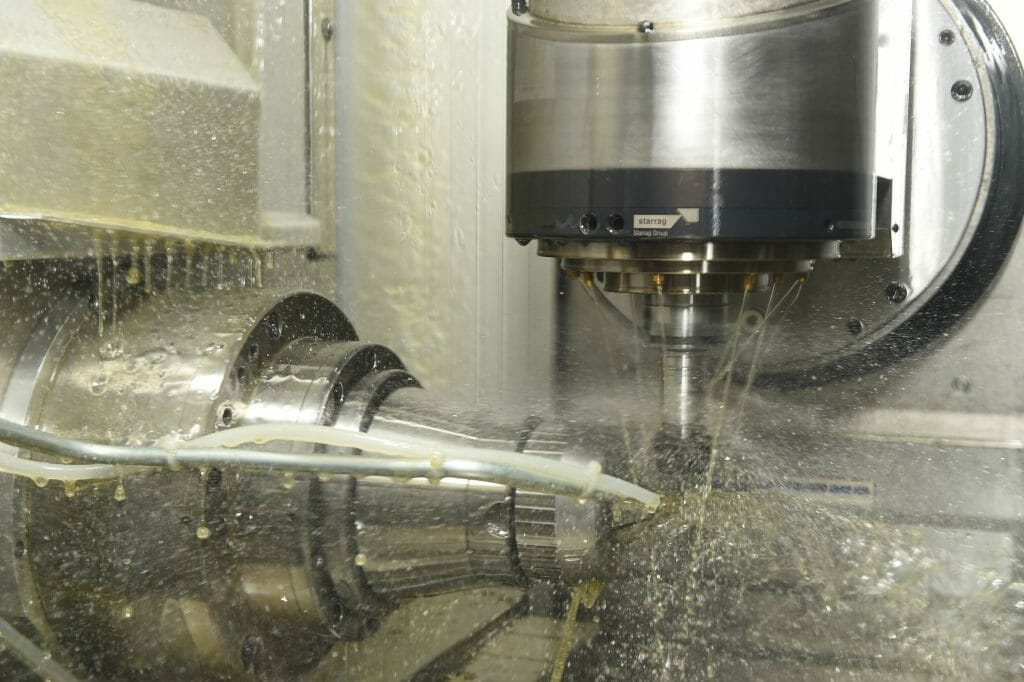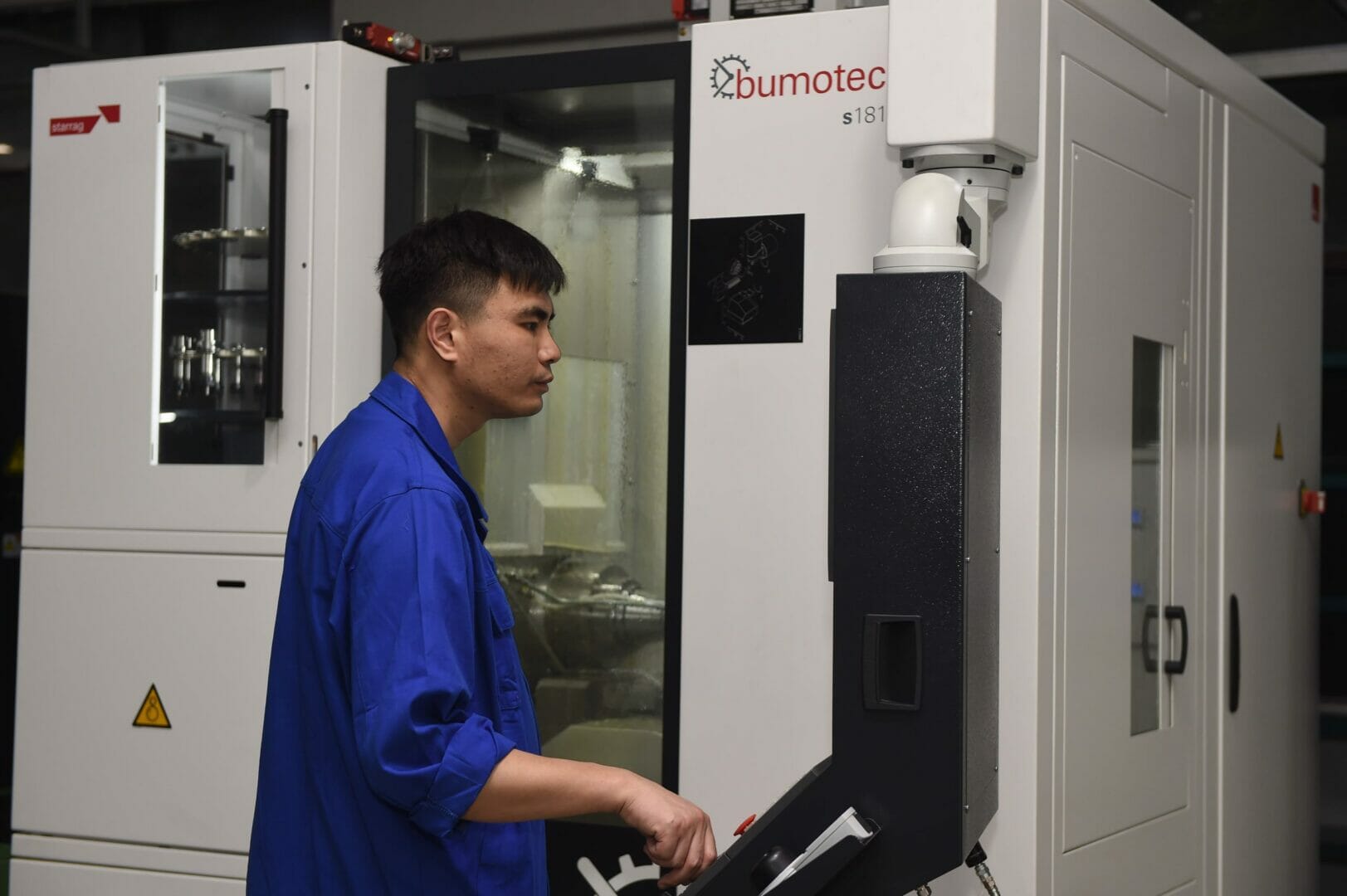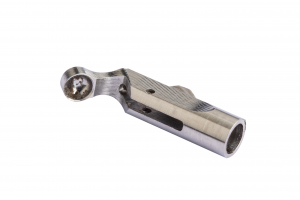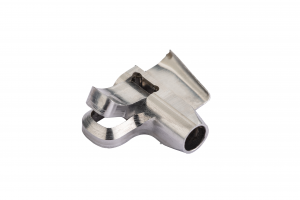A trio of Bumotec multi-axis, multi-tasking machining centres are not only helping Shanghai Medical Instruments (Group) to maintain its 50% market share in China for medical instruments, but their ability to finish-machine up to six faces at high accuracy and in a single set-up have also enabled the company to expand profitably into the manufacture of minimally invasive instruments.
Indeed, while the effectiveness of the machines at single set-up multi-operations has brought great rewards in both prototyping and manufacture, the company highlights its latest Bumotec – the five-axis s181 model with ‘front live tools’ on a sub-spindle – as being able to boost productivity by 20% on some parts.
Capable of producing complex, multi-faceted components from bar up to 65 mm diameter, and with up to seven-axis simultaneous machining in a single set-up, Bumotec machining centres are capable of drilling, thread forming, grinding, gearcutting and broaching in addition to turning and milling. They are renowned globally for producing small, intricate workpieces that come off the machine ready for assembly with no deburring – as Shanghai Medical Instruments has found.
A member of the Yuwell Group, the company has four production plants in the Shanghai area; three manufacturing/assembly plants and one site dedicated to forging, surface finishing and heat treatment. Established in 1928, it annually produces over 10 million parts, which are used in hospitals throughout China and in other countries. The components are produced in limited batches of 200- to 300-off, and the company’s in-house manufacturing routines are complemented by a group of sub-contractors. In addition, there is an in-house team of 20 quality control engineers.
The company has a product catalogue of more than 8,000 items, which includes its flagship, award-winning JZ brand, and key products are knives, scissors and surgical clamps, as well as 400 different types of micro instruments for anastomosis, the treatment of lymphatic vessels and limb reconstruction.
Its portfolio also embraces instruments for ENT surgery, orthopaedic implants and 300 types of minimally invasive instruments such as laparoscopic clamps (used in endoscopy procedures) plus 400 instruments for dental surgery. Surgical staplers and electrical tools used in surgery are also part of the portfolio.
The development of so many different products is based on close work with hospitals and universities, and the company’s R & D team collaborates with these ‘partners’ throughout the entire new product development process, from design, studies and validation up to production. Its well-equipped workshops allow the process to be very flexible and responsive – and the prototyping and production of certain parts is a key area for the Starrag-supplied Bumotec machining centres (models s192, s181, s191), the first of which was installed in 2005.
A range of 500 different types of minimally invasive and ENT instruments are machined in a single set-up from bar on the Bumotec machining centres. It was found that ‘conventional’ separate processes/machines were not able to produce these components effectively, especially in terms of consistent quality of the relationships of ‘matching’ parts/features. Also, the multiple complex clamping procedures required for the various stages of machining made traditional production slow and inefficient.
Bumotec machines, on the other hand, can produce complete components in a single clamping from bar stock, finish machining up to six faces in record time – in one case, up to 20% quicker.
In fact, even the production of separate parts (on the same machine) for an orthopaedic instrument assembly meets the company’s stringent quality standards. The two-part assembly is now produced with ultra high-accuracy, ready for assembly, and more cost-effectively by a Bumotec s191 rather than the former route of using a lathe, a mill then an electrical discharge machine to finish the parts to the required standard.
The Bumotec s191H can achieve highly accurate (to +/- 2.5 microns) machining solutions within its X, Y and Z axes range of 410 mm, 200 mm and 400 mm, respectively, courtesy of linear drives and high-level thermal stability. In addition, its main spindle is complemented by a sub-spindle that can turn in both horizontal and vertical planes, for multi-process/tasking routines, and tool magazine options extend to up to 90 pockets on a machine that has rapid traverse rates of 50 m/min and a 30,000 (or 40,000) revs/min spindle speed that also contribute to its ultra-fast cycle times.
Another example concerns the production of an instrument for ENT surgery. This is produced on a Bumotec s181 in eight minutes, instead of ten minutes by former methods, by the simultaneous use of the machine’s sub-spindle.
The company continues to invest in Bumotec because, it says, “the machines’ stability in production is extraordinary, and their ease-of-use makes them accessible even to the newest members of our production team”. Also, when installed, “the training supplied means we can get the machines into production very quickly”. It adds: “Production changeovers are quick and easy, and maintenance routines are effective and efficient thanks to Starrag’s excellent customer support.”
Commenting on how the success of Bumotec machines can be mirrored by UK medical manufacturers Lee Scott, Starrag UK’s director for sales and applications, says: “The UK medical manufacturing market is an important sector for Starrag and, underpinned by our engineering applications knowledge, we know that Bumotec users can ‘hit the ground running’ in terms of gaining production efficiencies.”
Typical medical parts (above) produced on the Starrag Bumotec machines (below)








